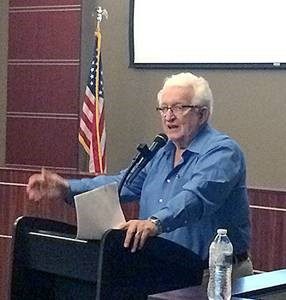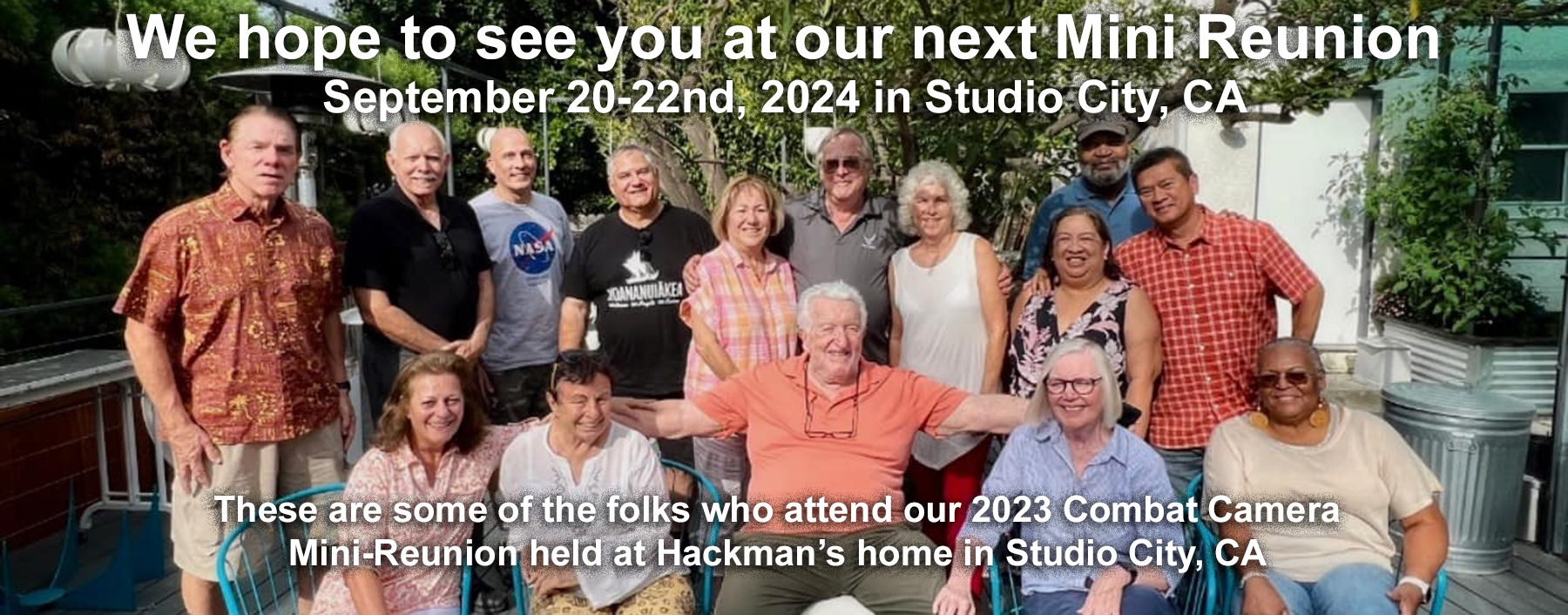
Ken Hackman
From the Highland Community News: Thursday, August 31, 2017
Ken “The Godfather” Hackman
Retired Chief Photojournalist of the USAF (retired) Ken Hackman shares his history with the USAF Combat Camera when based at Norton Air Force Base during the Norton AFB Museum’s Evening at the Museum, Aug. 23.
“Being an Air Force photographer puts you where the action is,” said Chief Photojournalist of the USAF (retired) Ken Hackman as he presented the experiences and photographs taken by himself and those who worked with him at the USAF Combat Camera headquartered at Norton Air Force Base from Vietnam War to Desert Storm. It was a packed house for the museum’s ninth “Evening at the Museum” Wednesday, Aug. 23.
Hackman, 79, was nicknamed “the Godfather” for his success in mentoring and shaping of young photojournalists throughout his 40-year career in military visual information. It’s a career that took him all over the world to photograph monumental and historical events from military actions of Vietnam to the test detonations of nuclear bombs through the digital age and to the burning of oil fields following Desert Storm.
Hackman began his career at the age of 17 when he joined the Air Force in 1955 and was assigned to a 45-person unit in Japan. Following his first enlistment, Hackman left the service and became an Air Force civil service photographer for the Aerospace Audiovisual Service and then Air Combat Camera.
“If there’s one thing the military loves to do it’s reorganize,” Hackman said.
When the Audio Visual Service was reorganized as Combat Camera in 1968, its headquarters was consolidated at Norton Air Force Base, in a large building that still stands just south of Third Street.
“That roof leaked from day one to the day we moved out,” Hackman said.
From that building, photographers were sent out to document the Air Force’s actions worldwide, and Hackman shared many of the photos taken in his slide show presentation.
The photos showed B-52s in Thailand, flyovers of the Ho Chi Minh Trail, C-47 gunships on night missions, Agent Orange air drops and the pick up and return of American POWs in Operation Homecoming.
The slide show also featured several familiar faces including Bob Hope. Hackman’s crew flew with Hope’s team during a portion of one of his many tours to entertain the troops. There were also photos of Brig. Gen. Jimmy Stewart. A World War II veteran, Stewart helped narrate training videos and served in the USAF Reserves through Vietnam War.
Purposes for the photographs ranged from documenting historical events, training purposes, mapping and planning, documenting weapons exercises, news reels, and public relations.
Not all of Hackman’s work and experiences dealt with photographing wartime events. Hackman also had the opportunity attend several Olympic Games in order to photograph Air Force athletes. Combat Camera also documented the Air Force’s winter airdrop missions resupplying scientists stationed in Antarctica.
Hackman also took several of the official photos of Air Force One, including flyovers of Mt. Rushmore.
When discussing his photographing America’s final atmospheric atomic bomb testing in 1962, Hackman said, “My only thought after seeing quite a few detonations is you don’t want to go there.”
Hackman said he especially enjoyed getting to fly in the backseat of fighter jets and photographing the U-2 spyplane.

